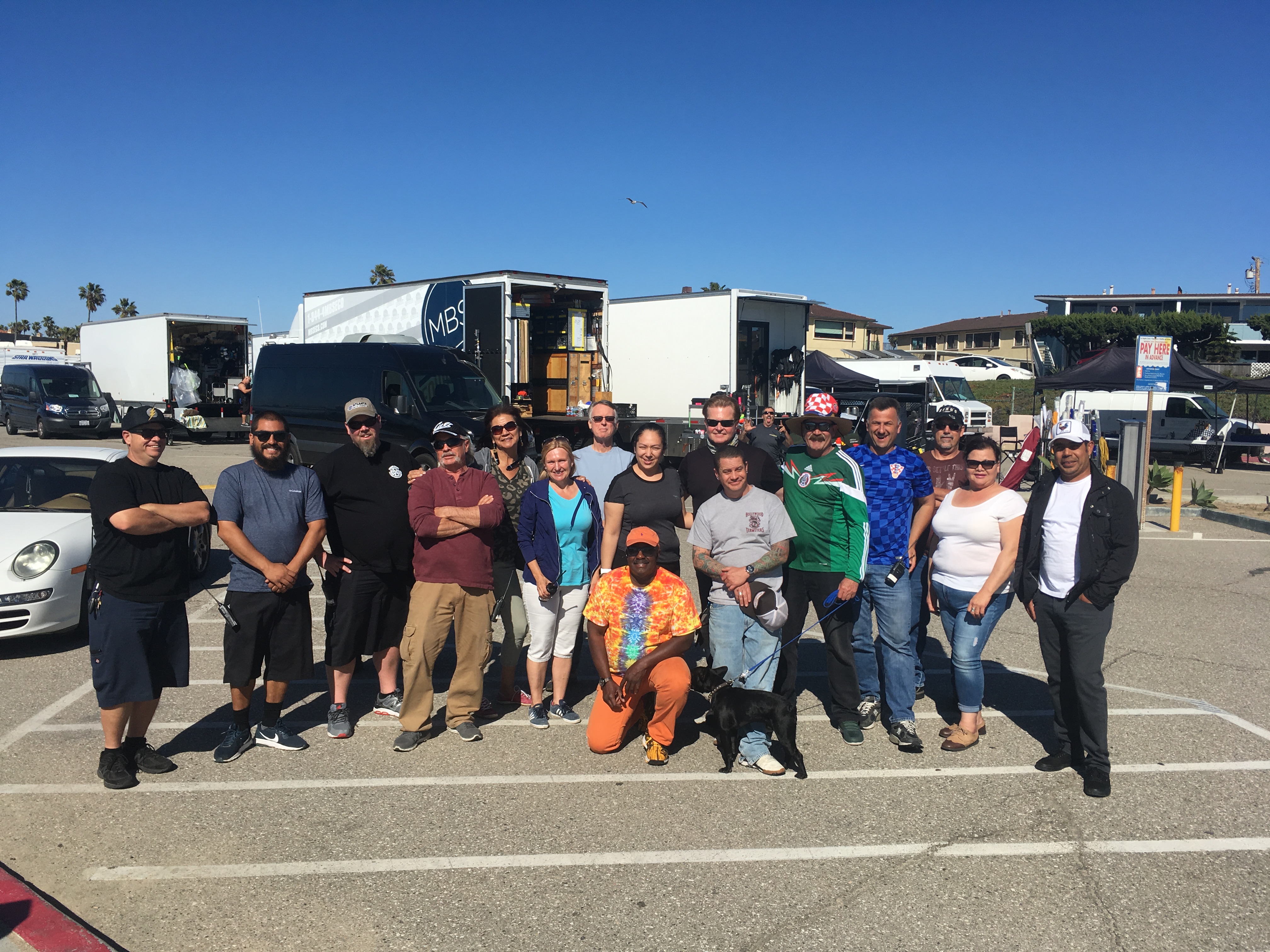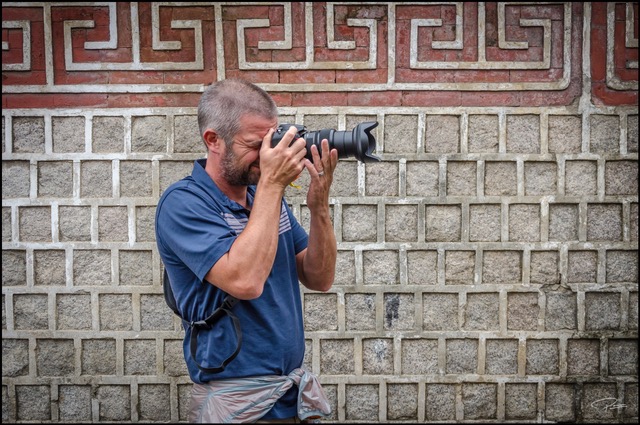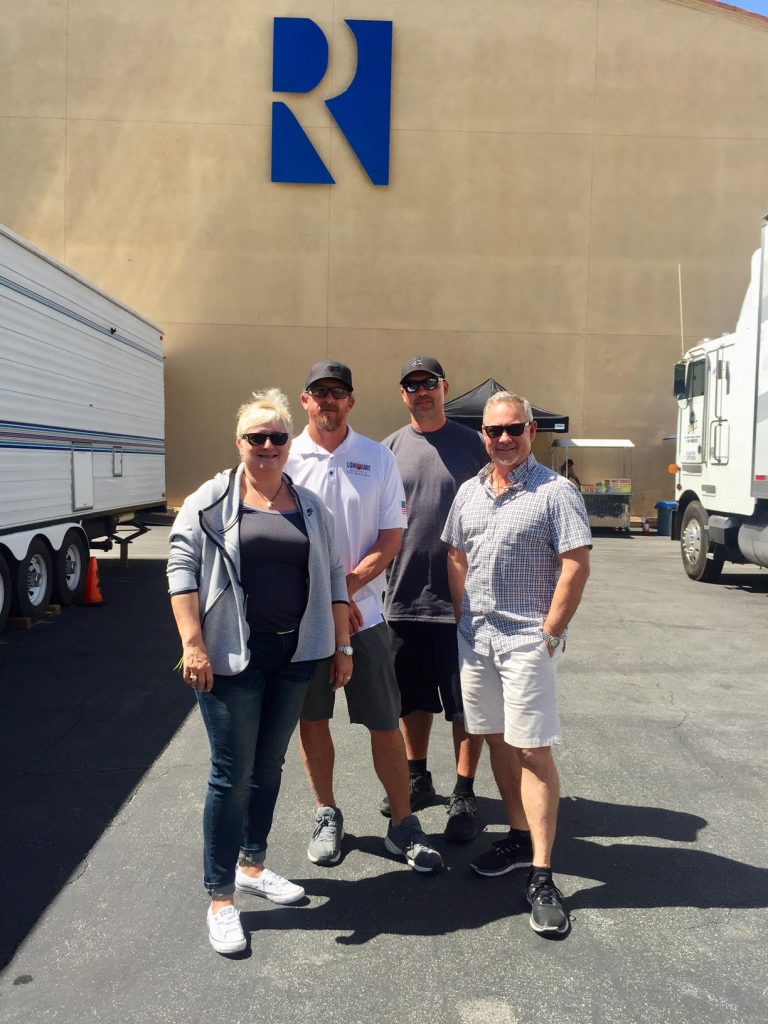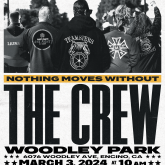SNOWFALL in Los Angeles
By Matthew Klekner

“Snowfall” is a dramatic series that centers on the crack epidemic that swept through Los Angeles in the early 1980’s. Much like “The Wire and Traffic”, it’s a sprawling narrative that spans multiple generations and story-lines.
The three main story arcs reside in South Central Los Angeles, East Los Angeles/Boyle Heights and the jungles of Nicaragua. As the seasons progress, the storylines converge, and the show spins an elaborate web that spans the entire city.
The story of “Snowfall” follows three individual characters, but the neighborhoods in which they live play a large role in the story. As characters develop, so too do the neighborhoods.
 “I like to say to get to the world of ‘Snowfall’ you have to peel the onion back multiple layers to get to where we reside,” says Location Manager Brian O’Neill.
“I like to say to get to the world of ‘Snowfall’ you have to peel the onion back multiple layers to get to where we reside,” says Location Manager Brian O’Neill.
“On a show like this we don’t really live in the standard filming world. We don’t often shoot in high falutin’ restaurants or big, beautiful, Beverly Hills mansions,” he continues.
“Early on it was just myself for the first month doing some broad strokes scouting of the neighborhoods. Once we narrowed them down, we started going door-to-door to find where these characters would live and if these neighborhoods are ok with us potentially filming there for the next five years. The story arc is a five-season plan if all goes as planned.”
The story of “Snowfall” starts in the summer of 1983 and what most people don’t remember is that Compton was just another suburb at the time. Things were actually pretty good there, precisely because the crack epidemic hadn’t decimated it yet.
“Just Google 1983 Los Angeles and take a look at the pictures. Thirty-five years ago, things were drastically different than today. It is only 1983, but we might as well be creating 1940,” Says O’Neill.
“In ’83 people didn’t have their yards fenced off or bars on their windows. In 1986, ’87, ‘88, when the neighborhood started to take a turn for the worse, that’s when all the security bars were put on people’s houses and fences went up around their yards. In a lot of the neighborhoods where we shoot, we actually take down (and put up) all their fences and bars every time we come and go.”
1983 doesn’t seem like too long ago, but everything from the street signs to advertising signs had to be covered everywhere they went. There are also all the modern inventions like DirecTV dishes, which pop up all over the neighborhood. So many things we take for granted every day, simply didn’t exist 30 years ago. And then there are the picture cars.
“A simple walk and talk down the street takes multiple blocks of us clearing the street to put our period cars in the road. And in most neighborhoods, when we come in to clear their cars off the street, they want to put them in their driveways. But we can’t even have them in their driveways, so we have to find alternative parking lots. We have a shuttle system to get neighbors to park in alternative places all over the city,” says O’Neill.
“That’s always a challenge wherever you go,” says Transportation Coordinator Craig Fehrman. “You have to hide the company out of  sight and you have to clear the streets of all the modern-day cars and trucks.”
sight and you have to clear the streets of all the modern-day cars and trucks.”
“Finding places to park huge companies and big equipment is really a challenge nowadays,” adds Fehrman. “All the lots that we would normally park at are gone now. That’s a challenge for Locations, but they do a great job on the show finding us places to park.”
“They’ve also provided us with good security and hired local neighborhood liaisons to help us manage and work with the neighborhood environment,” says Fehrman.
South and East Los Angeles are not known as hot beds of filming activity. These are neighborhoods that are not used to a big company rolling in and changing things around and impacting their daily lives. Gaining access and trust required a group effort to lock down entire neighborhoods and get everyone on board with sharing in the show’s creative vision.
“I have a very diverse crew from all different backgrounds from all different neighborhoods,” says O’Neill.
“Everyone was excited that we were coming to town, that we were going to portray their neighborhood. They know we are not there to exploit their community,” says O’Neill.
“We reached out to the City Council. We reach out to the LAPD. We have a number of community liaisons and involvement with the local churches. We’re working with all of them,” he continues.
“Snowfall” shoots in these neighborhoods regularly and they didn’t want to behave like some other shoots that come and go quickly and leave a wake of trash or negative sentiments behind them. They made every effort to inform and include the neighborhoods.
“We give back as much as we can,” says O’Neill. “Just last week we had a ‘Food Truck Friday’. We brought out a whole bunch of food trucks for one of our neighborhoods in South L.A. and we weren’t even filming there. This wasn’t for the crew, it was for the neighborhood to come out and enjoy. It was a ‘Thank You’ from us.”
“We also invited a whole bunch of the neighborhoods to our premiere last year and there’s a sense of pride that we’re seeing now in season 2.”
“We’re also trying to institute an internship project this year with the folks from the neighborhoods we film in, that’s both East L.A. and South L.A. That’s still in its infancy but we’re hoping to try to open the world of filmmaking to the people in those neighborhoods.”
When ‘Snowfall’ was initially budgeted they planned on being on stage two or three days per episode. When you shoot 8 days per episode, those days on stage allow Locations and Transportation to catch their breath, get caught up, and get prepped for the next episode. That was the initial plan at least, but ‘Snowfall’ often doesn’t conform to the norms of episodic filmmaking.
“We’re beginning Episode 6 of this season and we’ve had, I think, three days on stage in all six episodes, and two of them were partial stage days as we moved out to a location at the end of the day,” says O’Neill.
“I like to say we’re out ten out of eight days,” he continues. “We have multiple locations many days and we probably shoot 15 locations within an episode.”
“It’s a very busy show,” acknowledges Fehrman.
“T.V. has sort of evolved into a smaller footprint,” says Fehrman. “It’s just easier to work since we have to move almost every night and sometimes make multiple moves during the day.”
“Smaller 10 tons are the main equipment for grip, electric and camera departments. It’s just an easier way to travel and it makes it a lot easier for the different departments to access their equipment, since the smaller trucks can park closer. It’s just a good formula for shooting a show like this. When you travel smaller you can accomplish more.”
As a 41-year veteran of Local 399, Craig is no stranger to working in challenging environments. As a Transportation Coordinator he’s coordinated large projects like “Hunger Games”. For the better part of the past ten years a lot of his work has taken him out of town throughout the country, to places like Texas, Virginia, New Orleans, Oklahoma, Mississippi and Atlanta, to name a few.
“You meet a lot of great people and have a lot of great experiences. But when it comes to the pure professional and knowledgeable work force, there’s no place like home,” says Fehrman.
“Obviously we’re a smaller footprint than a big feature, but in T.V. you’re basically prepping a small feature every episode. So, there’s always a new scout, another meeting, or new equipment to deal with.”
“On a feature you have a little bit longer to prep but you get all that stuff done prior to shooting. Sure, there’s going to be changes during your shoot on a feature, but you have a set schedule that you’re trying to stick to. In T.V. it’s a new schedule every eight days and new things to figure out.”
It helps that the studio and the producers understand what it takes to do a show like this on location. They trust them and give them the resources they need to do the job.
“If you’re hiring and laying off guys and finding new equipment every week that can be a challenge. So, it can be a little bit of a pain in that respect. It’s nice to have a roster full of experienced help to pull from,” says Fehrman.
“But this show is a little bit different than normal because we are out every single day. They’ve allowed me to keep my core group with me the whole time and they are all doing a great job. So that makes it a little bit nicer and easier for me rather than having to cut back when we’re on stage and lay off all my crew for a couple of days and then rehire my crew later.”
“I carry basically thirty-five full time Drivers. So, it’s great and it’s nice for them too because they know they’ve got a fulltime job and they don’t have to go looking for a different show every couple of days,” says Fehrman.
“Captain Dave Morrison is doing a great job for me. I sort of leave all the daily work of the set to him. He does the daily production end of it. It’s nice to have the capability of being able to rely on guys you know who can do the job without micromanaging everybody.”
The Locations department is well staffed as well, carrying anywhere between 10 and 15 people at a time.
“You know I’ve got a very large team and they’re great at making this happen from day to day. It’s the most difficult and challenging job I’ve been a part of in my career,” says O’Neill.
 The work Brian and his Locations team did on Season 1 did not go unnoticed and they were awarded the best One-Hour TV Location Team of the Year and best TV One-Hour Location Manager of the Year by the California On-Location Awards.
The work Brian and his Locations team did on Season 1 did not go unnoticed and they were awarded the best One-Hour TV Location Team of the Year and best TV One-Hour Location Manager of the Year by the California On-Location Awards.
“I was really excited to see my team win because they deserve all the credit. And it was nice to be acknowledged as an individual but without the team I don’t exist. I spend more of my days in the van scouting for the next episode and just trying to manage the problems that arise on a daily basis.”
“I like to say a good day in Locations on set is one where nobody needs to call for Locations.”
“I’m just the quarterback. I just get to sit there and throw the ball out to them and let them go to work, which they do amazingly! I’m only as good as the people I have around me and I’ve got some of the best and talented location pros around me.”
“Snowfall”, as a series, got off to a rocky start. The initial pilot for the series was thrown out by the Network, FX, and a new crew was brought in for a major overhaul of the project. FX knew they had something special on their hands and they wanted to see this project through.
FX applied for a tax Incentive for “Snowfall” while the project was still in the pilot stage and as the final iteration of the pilot took shape, “Snowfall” was granted a $4.9 million tax credit towards its first season. Shortly after airing, FX quickly picked up the project for a second season and their faith in the project was ultimately rewarded when the incentives were renewed as well.
“I did the second pilot and we always had the idea that as soon as we finished the pilot we were going to go straight into the series. You know, nothing’s ever a guarantee. I think we took three to four weeks off and we started the series,” says Fehrman.
“I have shot a lot out of California and I would say the tax incentive came at a great time for everybody,” says O’Neill. “And on a personal note the tax incentive came right about when my son was born. So, it has let me be home for the first two and a half years his life.”
“If I have to leave before he gets up I can usually see him before he goes to sleep, or vice versa, but to not have to be in a hotel each night is a great thing and I’m really hoping we get a renewal for another bunch of years to keep filming here.”
“It’s nice in the respect that most everybody that you hire are experienced and they know what they’re doing,” says Ferhman. “It makes my job easier. When I’m out of town I never know what the crew is going to be like and there’s always some good, some bad.”
“When you are in L.A. there’s not a million questions and there’s not the whole learning experience of telling someone what they need to do.”
“You know, they just don’t get the same quality of work out of the distant hire crews as they do in L.A. It’s always nice to get back home and make a phone call to someone, and say, ‘Hey I need you to do this,’ and they do it.”
“I did a show in Atlanta last year and when I showed up on the studio lot I was surprised by how many people I knew. So many people had transplanted there or had been there for quite some time. Unfortunately, because that’s where the work was, especially in Features. Features are still catching up here in L.A. It’s predominantly a T.V. driven town. So, if feature work is your forte, then you had to be out of town. That’s hard, but that’s the reality of it. There are more features coming back now, and the incentives have had a great impact. They’ve definitely turned this town around,” says Fehrman.

